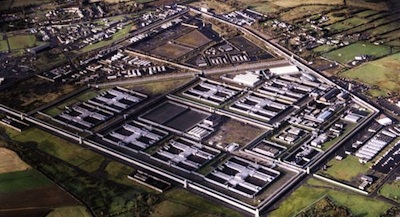
The site of the Long Kesh prison will be used to create “a shrine to peace”, Sinn Fein’s deputy First Minister has said, following a decision to go ahead with the project.
An estimated 100 million pounds is to be invested in the redevelopment of the site which housed the H-block cells and the hospital where republican hunger strikers like Bobby Sands died.
A political football for over 15 years, a proposal for the construction of a sports stadium at the site as part of the development was shelved several years ago. But plans again gathered momentum in early 2012 when European officials confirmed EU funding for the scheme.
A political football for over 15 years, a proposal for the construction of a sports stadium at the site as part of the development was shelved several years ago. But plans again gathered momentum in early 2012 when European officials confirmed EU funding for the scheme.
A variety of proposals for the giant 350 acre site are still being considered, but a new conflict reconciliation centre has already been given the go ahead. Work on the centre will begin around October, with work due to be completed two years later.
Sinn Fein Deputy First Minister Martin McGuinness said both he and the DUP First Minister Peter Robinson backed the project in general.
We are going to agree what is going to be in it, he said. People will be proud of the way in which we, in a very sensitive fashion, recognise that we have to do this in a way that respects everybody.
This is going to be an inclusive site for everybody, recognising the way in which everybody contributed, whether negatively or positively, to what happened on this site.
Peter Robinson pointed to the team appointed to carry out the development, headed by a former RUC assistant chief constable and involving a number of prominent unionists and loyalists.
He strongly denied claims by unionist hardliners that they were building “a shrine to terrorism”.
“It is so absurd that the men in white coats should lead some people off,” he said.
Many unionists have called for the site to be razed to the ground to destroy memories of the hunger strike, while some have proposed alternative locations for the conflict centre, such as Belfast’s Crumlin Road jail, where republicans were held and executed.
The prison, officially known as ‘HMP Maze’, closed in 2000. In the decades before it became a prison, the area known as Long Kesh was a World War II airbase. In then became an internment camp and a jail, the site of subsequent republican jail protests, the 1981 hunger strike, and the mass breakout of 38 IRA prisoners in 1983.
A number of prison buildings were given listed status, with the retained portion of the complex including one of the H-shaped cell blocks and the hospital where the hunger strikers died.
Reverend Mervyn Gibson, Grand Chaplain of the Orange Order, explained opposition to the plans this week by saying there was a fear among unionists that the story of the hunger strike would dominate the history of the conflict.
“Everyone has got their memorials around the countryside, but this one appears to be on a multi-million pound peace centre,” he said.
Laurence McKeown, a former hunger striker who survived the jail protest, said unionists were still struggling to come to terms with what happened in the hunger strike.
“The history of unionism is of a one party state from partition they ruled it. It was an Orange state. And then it started to crumble,” he said. “And I think the hunger strike smashed it, because it... changed the psyche of nationalist people.”
![[Irish Republican News]](https://republican-news.org/graphics/title_gifs/rn.gif)
![[Irish Republican News]](https://republican-news.org/graphics/title_gifs/harp.gif)

